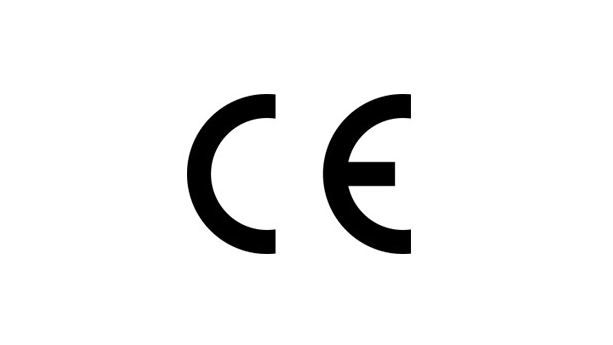
Children’s jewelry is subjected to several safety standards and regulations concerning substance restrictions, physical properties, and more.
In this guide, we discuss applicable regulations and directives such as REACH, the General Product Safety Directive, and the Toy Safety Directive, which apply to jewelry that has a play value. More specifically, we cover EN standards, documentation, labeling, and lab testing requirements.
Content Overview

FREE CONSULTATION CALL (US, EU & UK)
- Request a free 30-minute call with Ivan Malloci to learn how we can help you with:
- Find product requirements
- Certification and labeling
- Lab testing
REACH
REACH (Registration, Evaluation Authorization, and Restriction of Chemicals) applies to consumers products imported or manufactured in the EU, which includes children’s jewelry. REACH restricts the use of certain hazardous chemicals and pollutants contained in products.
There are different types of restrictions depending on the substance and the product:
a. A maximum allowed limit for the concentration of a specific substance (ie. 0.1% by weight) – this is the most common type of restriction
b. A maximum allowed migration limit (ie. 0,5 μg/cm²/week)
REACH Requirements Summary
- Restricted substances
- Test Reports
- EN 1811 – Reference test method for release of nickel from all post assemblies which are inserted into pierced parts of the human body
Restricted Substances
Importers and manufacturers can refer to Annex XVII of REACH regulation to learn more about restricted substances that might apply to jewelry. It also provides specific substance limitations.
Here some examples of restricted substances that could be contained in your jewelry products:
- Cadmium < 0.01% by weight
- Lead < 0.05% by weight
- Phthalates <0.1% by weight
Also, nickel can’t be used in products that are designed to stay in prolonged direct contact with skin, including jewelry, if the migration limit is greater than 0,5 μg/cm²/week.
In the case of parts that are inserted into pierced parts of the human body, for example, earrings, the maximum allowed migration limit for nickel is set to 0,2 μg/cm²/week.
Test Report
REACH compliance testing is necessary to verify if the children’s jewelry contains substances above the set limits. Assuming the products pass lab testing, you’ll receive a lab test report which then serves as evidence that your children’s jewelry is in fact REACH compliant.
This document can be requested by the authorities, Amazon, retailers, or even individual consumers. Last year we actually received a report from a UK-based Amazon seller stating that Amazon suspended their jewelry product listings – as they could not provide REACH lab test reports.
EN 1811 – Reference test method for release of nickel from all post assemblies which are inserted into pierced parts of the human body
EN 1811 is a harmonized standard under REACH, which helps importers and manufacturers to demonstrate REACH compliance for nickel release from jewelry or other metal components that are inserted into pierced parts of the human body, such as children’s earrings.
Importers and manufacturers of earrings and similar products can refer to the test methods specified in the EN 1811 standard, and get in touch with lab testing to conduct tests to verify compliance. The standard also provides guidelines for chemical analysis, migration limits, specimen preparation, coatings, and more.
General Product Safety Directive (GPSD)
The General Product Safety Directive (GPSD) aims at ensuring the general safety of consumer products imported and sold in the EU market, including children’s jewelry. Generally speaking, the purpose of the GPSD is to ensure that products are safe.
GPSD Requirements Summary
- Risk Assessment Report
- Technical File
- User Instructions
- Test Report
- EN 14682 – Safety of children’s clothing
Risk Assessment Report
Under the GPSD, importers and manufacturers are responsible to perform a comprehensive risk assessment. The risk assessment report should outline potential hazards associated with children’s jewelry, for example, strangulation hazards.
Commission Implementing Decision EU 2019/417 explains that the report should include at least the following elements:
- Risk category
- Risk level
- Information on known incidents and accidents
- Remedial instruction
Technical File
A technical file is a set of product design and compliance documents, which helps importers and manufacturers to demonstrate product safety, even if it’s not stated in writing that a technical file is always mandatory under the GPSD.
Here we list some examples of information that should be included in a technical file:
- Technical drawings
- Product photos
- Bill of materials
- Labeling files
- Test reports
- Risk assessment
User Instructions
The GPSD does not set out specific requirements on the user instructions for children’s jewelry. Still, user instructions that provide clear and detailed instructions can help to ensure product safety.
Here we list some information that can be included in the product user instructions:
- Product description
- Intended use
- Safety instructions
- Cleaning instructions
- Warning statement (if applicable)
Test Reports
Lab testing is the only safe way to prove compliance with substance restrictions and other safety requirements, such as necklaces that might be too long and thus risk strangulating the child.
You can contact a testing company to make an assessment and perform the required tests for your product. Once your product passes the test, you can use the test report to support your risk assessment report and technical file.
Note that authorities, retailers, marketplaces such as Amazon, and even consumers might ask you to provide relevant test reports at any time.
EN 14682 – Safety of children’s clothing
EN 14682 sets out the safety requirements for cords and drawstrings on children’s clothing, and although it was developed for children’s clothing, the European Child Safety Alliance recommends it to evaluate strangulation hazards of children’s jewelry such as necklaces. This recommendation is probably due to the lack of a similar standard specifically developed for children’s jewelry.
This standard provides guidelines on safety measures, accident prevention, and potential hazards caused by cords and drawstrings.
Toy Safety Directive
The Toy Safety Directive applies to products that are designed or intended for use in play by children under 14 years of age, including children’s jewelry with play value. This includes, for example, jewelry sold with toy disguise costumes or jewelry designed to be assembled by a child.
Additional requirements apply to products that fall within the scope of the Toy Safety Directive.
Toy Safety Directive Requirements Summary
- EN 71-1: Mechanical and physical properties
- EN 71-3: Specification for migration of certain elements
- Declaration of Conformity (DoC)
- Technical File
- Test Report
- CE Mark
EN 71-1: Mechanical and physical properties
EN 71-1 provides mechanical and physical safety requirements for toys and other products that have play value. This standard provides testing methods, design requirements, safety measurement, and more.
The standard aims at reducing risks that might be caused by small parts that the child might ingest, sharp edges that might injury the child, long cords (or necklaces) that might strangulate the child, and more.
In addition, EN 71-1 provides guidelines on warning label requirements, depending on the different properties of the product.
EN 71-3: Specification for migration of certain elements
En 71-3 aims to reduce children’s exposure to certain toxic substances such as heavy metals and pollutants, by providing maximum migration limits for such substances, when present in the product.
For example, importers and manufacturers must ensure that the jewelry coating does not contain an excessive amount of heavy metal such as lead, mercury, and nickel.
Declaration of Conformity (DoC)
The Declaration of Conformity (DoC) is a self-issued document that serves as the primary compliance document that is often requested by authorities. In general, the DoC should include information such as:
- Product SKU or batch number
- Product description
- Importer or manufacturer’s information
- List of applicable standards and directives (eg. EN 71-1, Toy Safety Directive)
- Supporting test reports
Note that importers or manufacturers must draft the DoC before importing children’s jewelry with play value into the EU market. They are also responsible to keep the DoC for 10 years.
Technical File
The Toy Safety Directive requires that importers and manufacturers draw up the technical file. Annex IV of the directive outlines the information that is relevant for the technical file, which includes:
- Bill of materials
- Design drawings
- Packaging files
- Risk assessment
- DoC copy
- Test reports
- User manual copy
Lab testing and test reports
Third-party lab testing is required in order to verify if your children’s jewelry products are compliant with the relevant standards under the Toy Safety Directive. Testing procedures often include both substance testing and mechanical testing. Further, the testing procedure may also include small parts assessments and tests.
Assuming your product passes the test, you’ll receive a lab test report which services as a supporting document to the Declaration of Conformity and the technical file. Expect that market surveillance authorities, Amazon, and even consumers will request the test report at some point.
CE Mark

The Toy Safety Directive is a ‘CE directive’, which means that covered products must carry the CE mark. The EU provides CE marking guidelines, including shape, dimensions, and downloadable files.
When it’s not possible to include the CE mark on the jewelry itself, the mark shall be affixed on the product packaging and other documentation.
Traceability
Product traceability is mandatory under both the GPSD and the Toys Safety Directive.
Hence, importers and manufacturers should provide sufficient information. In most cases, they can choose to affix a permanent label on the product or its packaging, with information such as:
- Company name
- Address
- Contact details
- Product SKU
- Batch ID
- Material information
Amazon Requirements
If you want to list your children’s jewelry on Amazon EU, you need to comply with all relevant requirements. This includes compliance with REACH, GPSD, and the Toy Safety Directive (if your product has play value).
Here we list some of the most common documents and information required by Amazon:
a. Seller information (name, address, contact info)
b. Importer or EU manufacturer information (only if different than the seller)
c. Test reports (e.g. REACH)
d. Declaration of Conformity (only if your jewelry falls under the scope of the Toy Safety Directive)
e. Labeling files (including company information, warning labels and CE mark, when relevant)
Amazon also provides specific category policies and requirements for jewelry sellers, including:
a. Prohibition to sell second hand used jewelry – you can only list new products
b. Hallmark requirements for jewelry that contains precious metals
Note that Amazon is especially strict with children products, and might require additional documentation or even delist your products from the platform, if they deem that you didn’t provide sufficient documentation.
Compliance Risks
Children’s jewelry manufactured outside the European Union is not necessarily designed to comply with EU product regulations. Here are the main risks importers must be aware of:
1. Materials containing excessive amounts of restricted substances (e.g. phthalates and lead)
2. Physical and mechanical risks (e.g. strangulation hazards)
3. Small parts that can be swallowed (or parts that can easily break off)
It’s always up to you as an importer to ensure that your imported children’s jewelry is safe. Hence, lab testing is a mandatory part of the process. Keep in mind that additional documentation and labeling requirements may also apply.


















